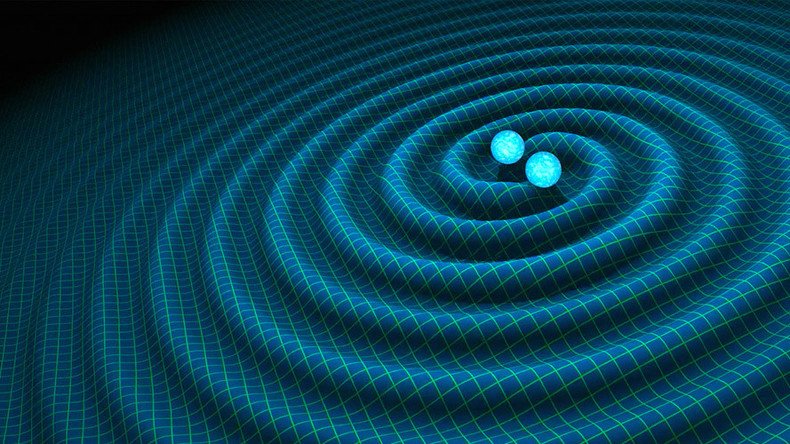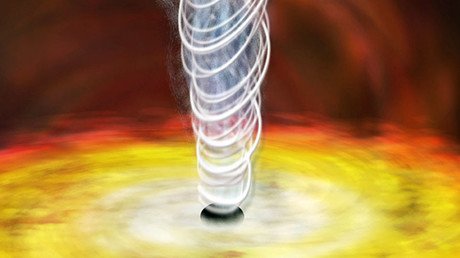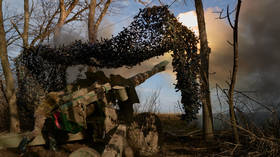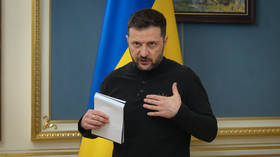RT talks to LIGO physicist Kip Thorne on detecting gravitational waves (EXCLUSIVE)

First predicted a century ago by Albert Einstein, the ground-breaking detection of gravitational waves could completely revolutionize our understanding of the universe and pave the way to missions to black holes. RT talks to Kip Thorne, the LIGO physicist behind the research.
READ MORE: Wave reviews: Proof of gravity’s vibrations leaves internet floating on air
RT:People here in Russia are particularly excited, because of this link that the hunt for gravitational waves was actually traced all the way back to Soviet scientists. How important was their contribution?
Kip Thorne: Their contribution was very important as the initial outline of the idea of this method. But a much larger contribution to our effort has come from the research group of Vladimir Braginsky at Moscow State University. I have personally had a close collaboration with Braginsky and his team. A sense going all the way going back to the early 1970s. And his team contributed the key idea of how to suspend the mirrors that we have. We have giant mirrors, they weigh 40 kilograms, they move back and forth by tiny amounts in response to gravitational waves and you have to suspend them in a way that produces no noise, it doesn’t jerk the mirrors at all. The suspensions were the result of research at Moscow State University by Braginsky’s group. An understanding of sudden jerking of the suspensions and of other mechanical pieces in this instrument, so-called excess noise or creep, that also comes from the Moscow State University group. That has been absolutely crucial to the success that we have announced here today.
RT: Was this truly a team effort?
KT: This was truly a team effort. Professor Braginsky had built a different type of detector, the type that was pioneered by Joseph Weber in the United States. When the technique that we were using in our prototype detectors became good enough and it was clear that this would be the method that would succeed, Braginsky shut down his old effort and he joined together with LIGO. And his team at Moscow State University has been a participant in our research going way back to the 1980s before almost any other team elsewhere in the world was participating. We now have sixteen nations involved in this, but the Russian contribution goes back almost to the beginning and has been truly crucial.
RT:Your expertise has been used in Hollywood. You were a scientific advisor to the movie Interstellar, the film where the hero enters a black hole. That’s fiction, but how close is it to becoming a fact. Is such a mission ever going to be possible, do you think?
KT: I believe that humans will ultimately do missions to black holes, but the nearest black hole is much farther away than the nearest other star besides the Sun. We don’t have the technology to go there now, we won’t have the technology to go there for several centuries, but I do believe we will get there and we will do explorations in the vicinities of the black holes. Very, very unlikely that anyone will ever go inside a black hole and survive. We’re not 100 percent sure, and in the movie Interstellar it does happen and I explain it in the book I wrote called The Physics of Interstellar. I explain how it happens, but that’s speculative. We don’t understand the interiors of black holes well enough to know whether that could really happen – and it probably can’t.
LISTEN MORE:
But what we have seen today in some ways is more fantastic. It’s not just a black hole there that you’re studying. It’s two black holes that go around each other, spiral together, and collide. And in that collision, they create something that we have never ever seen before as humans, as scientists, as astronomers. They create a storm in the fabric of space and time. It’s as though we had only seen the ocean surface on a calm day, but we had never seen it in a storm with crashing ocean waves. Similarly we have never seen space time with wildly oscillating rate of flow of time, wildly oscillating shape of space. We have never seen that before. Now we have seen it both in computer simulations and in observations with this gravitational wave detection. It’s a whole new way to study the universe. A whole new way to probe aspects of black holes that we didn’t understand until now.
RT:Clearly, a lot of scientist are extremely excited about this. Why though in particularly. What opportunities do you foresee opening up now because of this?
KT: This is just the very beginning. We’ve seen our first gravitational wave. We’ve seen for the first time two black holes colliding to form a new black hole. We’ve seen for the first time how space time behaves in a storm. But it’s just the beginning. We will be observing and studying other options.
We will see neutron stars made of pure nuclear matter, but the size of a very small town, spinning around and around with little mountains on their surface creating gravitational waves which enable us to explore the physics of nuclear matter. We will see black holes tear neutron stars apart. We’ll see neutron stars collide. We expect to see the central engines of supernova explosions. We even hope to see gravitational waves from cosmic strings. Strings that stretch across the universe, that are thought to have been created in the birth of the universe by the expansion to cosmic scale of the fundamental strings that are building blocks of all matter. We will be exploring these kind of phenomena.
We’ve only looked at gravitational waves with one wave length with periods of oscillation of milliseconds. There will be new gravitational wave windows opened onto the universe with other kinds of detectors that will see completely different things. Detectors that will be flown in space and we’ll see gravitational waves with periods of oscillation of minutes to hours. Detectors that will see periods of oscillation of months to years and even decades. And gravitational waves that have periods of oscillation nearly as long as the age of the universe. We will see all of these and learn completely different aspects of the universe with them. Each of these gravitational wave windows is sort of like going from optical to X-rays to radio waves where we different aspects of the universe with each of those tools. Each of the news gravitational wave windows will teach us different things. It’s a beginning of a whole new way to explore the universe. A way that will be a big part of 21 century astronomy and cosmology.















